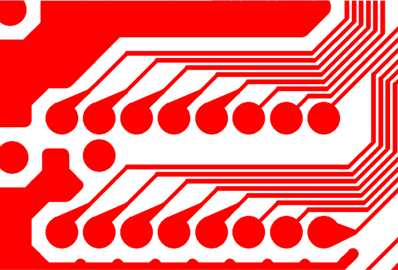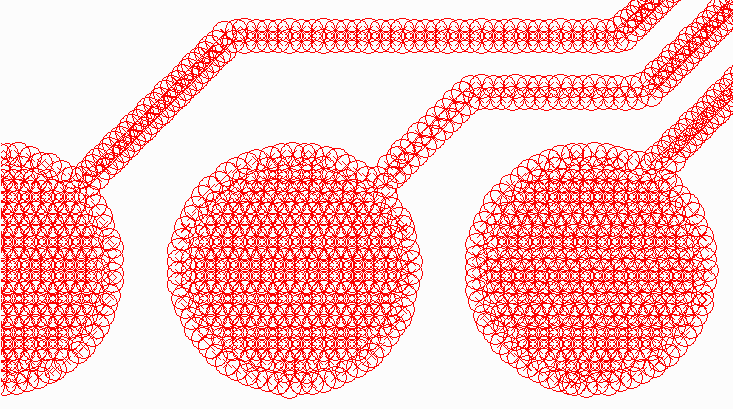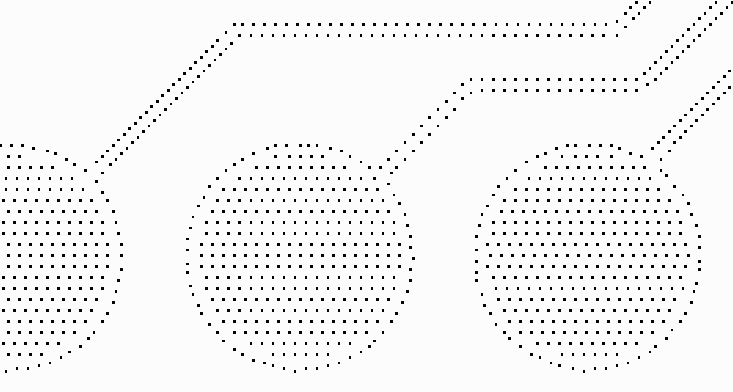Overview
"There is considerable interest in using ink jet technology to directly apply either photoresist to a printed circuit board or substrate or even applying the actual metal conductor material and thereby bypassing the mask and exposure steps normally used when fabricating PCBs.
A problem that is immediately encountered is the relatively large diameter of the droplet relative to the width of the lines (and gaps) that one needs to produce on the substrate. Because of this issue, most ink jet techniques have been limited to applying the silk screen directly to the PCB where the line widths are 4-5 times wider than the conductor lines.

A typical modern PCB with line width and gaps of 60 um and pads of diameter 400 um.
In attempting to image lines of 50-60 um in width using droplets of 30-40 um in diameter one cannot merely increase the DPI from 360-1440 to as high as 5000 to achieve line precision and edge smoothness; applying the ink droplets so closely spaced will result in overinking and the excess ink will run out beyond its intended boundary.
To achieve simultaneously the desired ink density and a smooth and precise line width it is necessary to precisely place the ink droplets in a way that current rasterizers do not. One cannot achieve desired results by uniformly removing the ink droplets; this is essentially the same as using a low DPI.

Droplets are precisely positioned to maintain line tolerance and ink density. DPI = 5080, droplet diameter = 40 um line width and spacing = 60 um. The Edge Rasterizer can produce output as a Gerber file using flashes that reflect the diameter of the droplet. This give a very good visual approximation of the final image on the PCB.
Once the user has used the Gerber output for the purposes of setting the best combination of DPI, droplet diameter and overlap, the output is set to TIF and generated. This TIF output is used to drive the inkjet machine (or it is converted into a proprietary format needed by the machine.) However one cannot easily examine the output TIFF file to check what the final image will look like since the TIFF image only shows the center of the droplet and does not account for the droplet diameter.

Droplet data in TIFF format - shows the centers of the droplets but not the diameter of each droplet.
UPDATE
Feb 8, 2013
64 bit Version Edge Rasterizer
Artwork has completed a 64 bit version of the Edge Rasterizer designed for Windows 7 64 bit OS. Much more memory can be addressed so that images of 24 x 24 inches at 4000 DPI can be produced. The raster algorithms have also be sped up so that large panels can be rasterized in 5-10 minutes.
Artwork has also provide the user with additional density controls - optimized for a new class of thermo-hardening inks that run considerably less than solvent based UV curable inks.
Online Manual
For details on how the Edge Rasterizer works and the various program settings, please go to the on-line manual.
